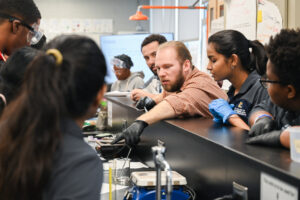CIRI Conducts Pilot Study Examining 3D Printing Emissions in Dental Schools
Research from Chemical Insights Research Institute finds vat photopolymerization 3D printing can generate hazardous chemicals and particles into the air during operation
The Chemical Insights Research Institute (CIRI) of UL Research Institutes has completed a pilot study on indoor air quality (IAQ) related to technologies and tools used in modern dentistry and dental education.
Of particular interest was the impact of vat photopolymerization 3D printing processes on air quality. Vat photopolymerization is a type of additive manufacturing that produces 3D objects by selectively curing liquid resin using light-activated polymerization. This technology has been widely used for dental applications to create dental parts including aligners, dentures, and crowns.
CIRI collaborated with a large southeastern dental training facility for this pilot study. Researchers evaluated indoor air quality by conducting air measurements while the printer was operating. Air measurements were made for volatile organic compounds (VOCs), formaldehyde and other aldehydes, and airborne particulate matter (PM) including PM2.5. An air comparison was made to a laboratory using a computer-aided milling machine.
CIRI researchers found that the vat resin-based 3D printing processes added numerous VOCs to the indoor air, including ones that are odorants and irritants, and ones associated with acute and chronic health concerns. Results indicate that proper selection of 3D printer location and the availability of sufficient fresh air ventilation with direct outside exhaust and the use of local exhaust systems are warranted.
Key findings include:
- Key VOCs associated with vat photopolymerization printing included N-acryloylmorpholine, 2-methyl, 2-hydroxyethyl ester 2-propenoic acid, 2-butoxyethanol, decamethylcyclopentasiloxane, methyl methacrylate, 2-(2-ethoxyethoxy) ethanol, formaldehyde, and toluene. Exposure to these VOCs may pose acute and chronic health concerns to people, as they represent carcinogens and respiratory and skin irritants.
- Emissions released from the vat photopolymerization printer included fine, nanometer-sized particles which can be inhaled into the pulmonary system and enter the bloodstream.
- While ultrafine particles were also emitted from the milling machine, VOC emissions were specific to the vat photopolymerization printer.
Read the complete report here: A Research Study of 3D Printing in a University Dental School.
More information about CIRI’s 3D Printing research can be found here: 3D Printing Chemicals | Chemical Insights.
PUBLISHED









